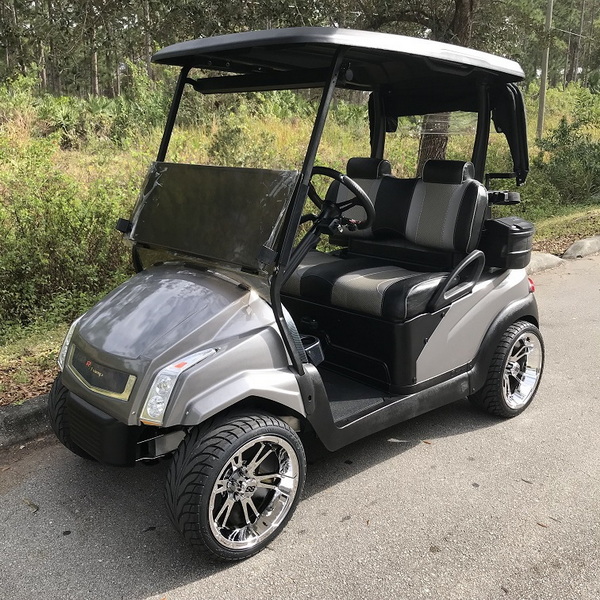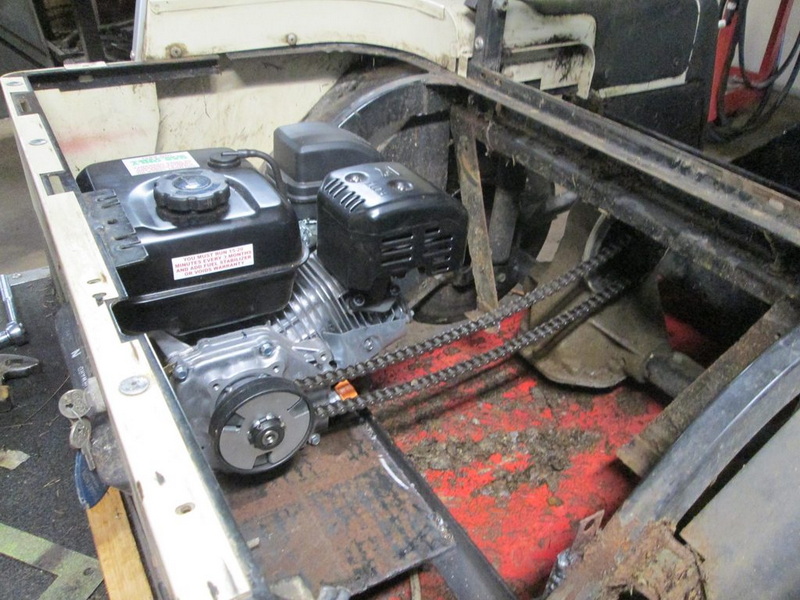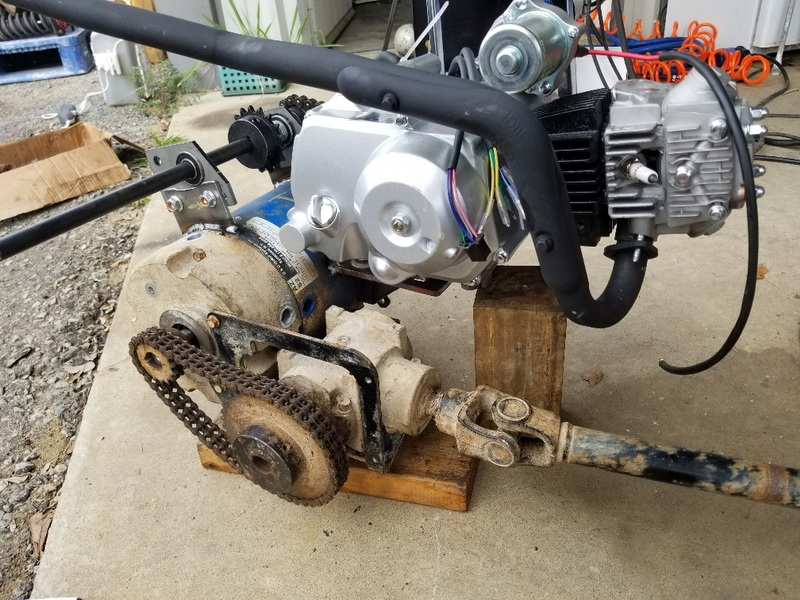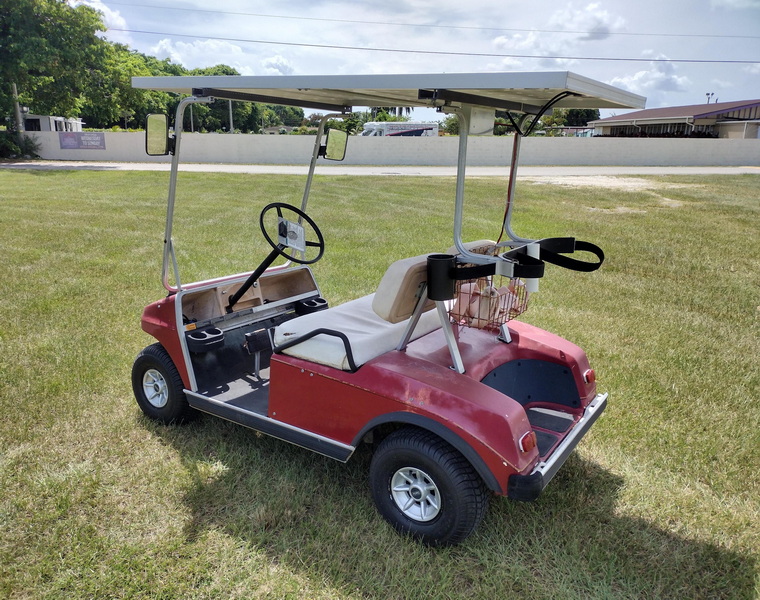Content Menu
● Understanding the Conversion Process
● Necessary Components for Conversion
● Step-by-Step Guide to Conversion
>> Step 1: Remove Electric Components
>> Step 2: Prepare for Engine Installation
>> Step 3: Install Gas Engine
>> Step 4: Modify Fuel Delivery System
>> Step 5: Connect Drivetrain
>> Step 6: Install Exhaust System
>> Step 7: Final Adjustments and Testing
● Important Considerations
● Advantages of Gas Golf Carts Over Electric Carts
● Disadvantages of Gas Golf Carts
● Conclusion
● FAQ
>> 1. What type of gas engine should I use for conversion?
>> 2. Is it legal to convert an electric golf cart to gas?
>> 3. How long does it take to convert an electric golf cart to gas?
>> 4. Can I do this conversion myself?
>> 5. What are some common challenges during this conversion?
Converting an electric golf cart to gas can be an exciting project for DIY enthusiasts and those looking to revitalize an old cart. This guide will walk you through the steps involved in the conversion process, the necessary components, and important considerations to ensure a successful transformation.

Understanding the Conversion Process
Converting an electric golf cart to gas involves several critical steps. The complexity of the process can vary based on the specific model of your golf cart, but generally, it includes:
1. Removing the Electric Components: This includes taking out the electric motor, batteries, and associated wiring.
2. Installing a Gas Engine: A compatible gas engine must be selected and installed in place of the electric motor.
3. Modifying Fuel Systems: This involves adding a fuel tank, fuel lines, and a carburetor or fuel injection system.
4. Connecting to the Drivetrain: The new gas engine needs to be connected to the existing drivetrain.
5. Adding Exhaust Systems: Proper exhaust systems must be installed to vent combustion gases safely.
6. Testing and Adjustments: Finally, testing the cart for functionality and making necessary adjustments is crucial.
Necessary Components for Conversion
To successfully convert your electric golf cart to gas, you will need several key components:
- Gas Engine: Typically a small gasoline engine compatible with your cart's chassis. Common choices include engines like the Predator 212 or 420.
- Fuel Tank: A tank that fits within the frame of your golf cart to store gasoline.
- Fuel Lines and Pump: To transport fuel from the tank to the engine.
- Carburetor or Fuel Injection System: Essential for mixing air and fuel for combustion.
- Exhaust System: To safely vent exhaust gases produced by the engine.
- Ignition System: A battery and wiring system that replaces the electric components previously in use.
- Throttle Control: A new throttle system must be installed to control engine speed.
Step-by-Step Guide to Conversion
Here's a detailed step-by-step guide on how to perform the conversion:
Step 1: Remove Electric Components
Begin by disconnecting and removing all electric components from your golf cart:
- Disconnect batteries and remove them from their compartment.
- Remove the electric motor and any related wiring or controllers.
Step 2: Prepare for Engine Installation
Once you have cleared out the old components, prepare for installing the gas engine:
- Check if any modifications are needed on the frame to accommodate the new engine.
- Build or modify a mounting platform for your gas engine.

Step 3: Install Gas Engine
Install your chosen gas engine:
- Securely mount the engine onto the platform you created.
- Ensure that it aligns correctly with the drivetrain.
Step 4: Modify Fuel Delivery System
Install necessary fuel delivery components:
- Position your fuel tank in a safe location within the cart's frame.
- Connect fuel lines from the tank to the carburetor or fuel injection system.
Step 5: Connect Drivetrain
Connect your new gas engine to the existing drivetrain:
- Depending on your setup, you may need to use a chain drive or direct coupling.
- Ensure that everything is aligned properly for smooth operation.
Step 6: Install Exhaust System
Install an exhaust system that will vent gases safely away from passengers:
- Route exhaust pipes away from areas where people will be seated.
Step 7: Final Adjustments and Testing
Finally, make adjustments as needed:
- Test all connections and ensure there are no leaks in fuel lines or exhaust systems.
- Start up your golf cart and make necessary adjustments for optimal performance.
Important Considerations
Before embarking on this conversion project, keep these considerations in mind:
- Legal Requirements: Check local laws regarding modifications to vehicles; some areas may have regulations regarding emissions or safety standards.
- Safety Precautions: Always wear appropriate safety gear when working on mechanical projects. Ensure proper ventilation when working with gasoline.
- Professional Help: If you are not confident in your mechanical skills, consider consulting with professionals who specialize in golf cart modifications.

Advantages of Gas Golf Carts Over Electric Carts
Understanding why one might want to convert an electric golf cart to gas involves looking at some advantages that gas-powered carts offer:
- Powerful Engine Performance: Gas engines typically provide more power than electric motors, making them better suited for hilly terrains and heavy loads.
- Longer Range: Gas carts can run longer distances without needing a recharge compared to electric carts that rely on battery life.
- Quick Refueling: Refueling a gas golf cart takes only a few minutes compared to hours spent charging an electric model.
- Lower Maintenance Costs: While both types require maintenance, gas engines often have simpler mechanical structures that can be easier and cheaper to maintain over time.
Disadvantages of Gas Golf Carts
While converting may seem appealing due to these advantages, there are also some drawbacks associated with gas-powered carts:
- Environmental Impact: Gas carts produce emissions that contribute to air pollution, making them less environmentally friendly than electric models.
- Noise Pollution: Gas engines tend to be louder than their electric counterparts, which can detract from the serene atmosphere often desired on golf courses.
- Higher Operating Costs Over Time: Gasoline prices fluctuate, which can lead to higher ongoing costs compared to charging electricity for electric carts.
Conclusion
Converting an electric golf cart to gas can breathe new life into an old vehicle while providing improved performance and range. By following this guide carefully and ensuring all components are correctly installed, you can enjoy a reliable gas-powered golf cart for years to come. This project not only enhances functionality but also offers personal satisfaction from completing such a transformation yourself.

FAQ
1. What type of gas engine should I use for conversion?
You should consider using small engines like Predator 212 or similar models that fit well within your golf cart's frame and provide adequate power.
2. Is it legal to convert an electric golf cart to gas?
Legal requirements vary by location; it's essential to check local regulations regarding vehicle modifications before proceeding.
3. How long does it take to convert an electric golf cart to gas?
Depending on your experience level and availability of parts, it can take anywhere from 10 to 20 hours to complete the conversion.
4. Can I do this conversion myself?
If you have basic mechanical skills and tools, you can attempt this project yourself; however, if you're inexperienced, consider seeking help from a professional mechanic.
5. What are some common challenges during this conversion?
Common challenges include ensuring proper fitment of components, addressing wiring issues, and making sure that all safety standards are met during installation.











































